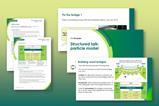Tried-and-tested advice for picking the right virtual experiment for the job

Social distancing guidelines and other public health considerations have impacted the hands-on practical work that students can do. Simulations that allow students to adjust variables can offer an alternative to practical tasks or augment hands-on activities by providing particulate representations. Visualising sub-microscopic interactions and how they are affected by changing variables helps students to make connections between the macroscopic, sub-microscopic and symbolic levels of representation needed to understand chemistry. For example, with the pH scale advanced simulation from PhET you can investigate the effect water has on pH of a solution. The different settings allow post-16 students to consider pH from a macroscopic and sub-microscopic perspective.
Social distancing guidelines and other public health considerations have impacted the hands-on practical work that students can do. Simulations that allow students to adjust variables can offer an alternative to practical tasks or augment hands-on activities by providing particulate representations. Visualising sub-microscopic interactions and how they are affected by changing variables helps students to make connections between the macroscopic, sub-microscopic and symbolic levels of representation needed to understand chemistry. For example, with the pH scale advanced simulation from PhET (rsc.li/LINK) you can investigate the effect water has on pH of a solution. The different settings allow post-16 students to consider pH from a macroscopic and sub-microscopic perspective.
Your role in selecting a simulation is to ensure that students grasp the underpinning principles. Simulations can be a student- or teacher-led activity and the same simulation can be used in different ways with different classes. Ensure you choose the right simulation for your lesson by considering these six questions:
1. Does it match the learning aims?
Make sure the simulation achieves your lesson aims. For example, the Concentration and rates simulation from The Concord Consortium provides a simple and effective means to model the relationship between concentration and rate. The same resource can be used with younger learners to understand particle motion and collision theory. It is important to be familiar with the resource and know exactly how you intend to use it.
Make sure the simulation achieves your lesson aims. For example, the Concentration and rates simulation from The Concord Consortium (rsc.li/LINK) provides a simple and effective means to model the relationship between concentration and rate. The same resource can be used with younger learners to understand particle motion and collision theory. It is important to be familiar with the resource and know exactly how you intend to use it.
2. Does it match learners’ needs and interests?
Simulations can improve students’ mental models by helping them to visualise sub-microscopic particle behaviour, but it has been suggested that simulations increase cognitive load and may compromise learning. Younger learners may enjoy interacting with a simulation but they may not learn much from doing so, whereas a teacher-led demonstration might elicit discussion and better support learning.
3. Is it level-, age- and culture-appropriate?
Look at the language and vocabulary used to guide the user on how to use the simulation. Can your students access this information? You may need to provide alternative instructions or a screencast so that your class can use the resource in the way you intend. It’s worth remembering that a resource may seem entertaining and memorable to you, but students are unlikely to share your cultural experience.
Take a different approach
Get users to build their own simulations. Try this teacher-tested method in your lessons on equilibrium
4. Is any adaptation needed?
This point is particularly important when deciding if a simulation would be useful for individual use or homework. If a lot of time is needed to prepare activities to pre-teach how to use a simulation, this is a sign that the level or the content may be not suitable for your class.
5. What advantages does it offer?
Check which simulations colleagues have used successfully before searching for something entirely new. Resources and ideas may have already been adapted to your context (although do check your own class’ needs before using it), plus colleagues may have useful advice on teaching the topic.
6. Can it be used legally?
It is easy to overlook copyright, but resources such as simulations, images, videos, articles and pdf worksheets are not always legally available for use in the classroom. Check that permission has been granted to use materials; look out for a Creative Commons licence or terms and conditions on the webpage.
Help your students get the most out of simulations
Once you’ve chosen your simulation, consider these points to maximise pupils’ learning:
- Provide clear objectives and direct instruction so students understand what to do and why they are doing it. This will help students do and observe what was intended of them.
- Think about what the students are going to do with the simulation. This might involve recording results, plotting graphs, writing conclusions, answering questions or making notes for a discussion in class that will encourage metacognition.
- Highlight key observations from using the simulation without providing any additional explanation of the underlying chemical concepts. This will help to scaffold students’ learning.
- Evaluate the impact on students’ learning. Did the students use the simulation in the way you intended and learn effectively? If not, what could be improved and should the simulation be used in this way again? This reflective process is vital to improving teaching and learning.














1 Reader's comment